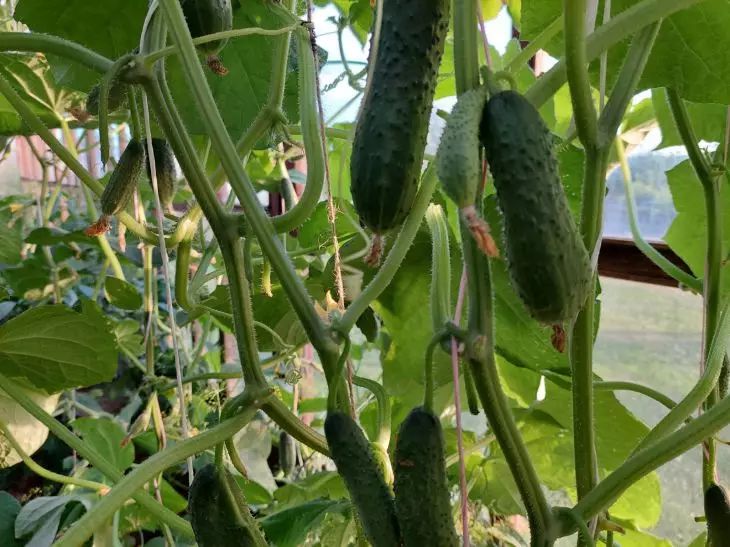Cucumber seedlings are usually planted 20–25 days after the seeds have sprouted.
The holes for planting young plants are prepared in advance. And it is important to know how to do it correctly so that the harvest is as large as possible.
Preparing the soil
Before you start preparing the holes, you need to pay attention to the soil so that it is as convenient as possible. About a bucket of compost or humus is added per square meter.
The fertilizer is scattered over the surface and then dug up to the depth of a shovel blade, burying it in the soil. When digging, weeds and plant debris are removed, clods of earth are broken up so that the plants have a comfortable place to grow and nothing hinders their development.
When the soil is ready, you can begin preparing the holes.

How to properly design holes for cucumbers
The size of the hole should be approximately 7x8 or 8-9 cm, this is quite enough for the roots of the seedlings to fit comfortably in it.
How to fertilize cucumbers
Fertilizers of one kind or another are added to the holes, and everything depends on the soil in which the cucumbers will grow, as well as their variety.
If the soil is clayey, you need to add a loosening agent - wood ash will do. Humus or compost is added to sandy soil.
Early varieties of cucumbers develop faster and do not need as many nutrients. Medium and late varieties sit in the garden longer and the hole will have to be filled more powerfully.
The best fertilizer for cucumbers
Place 2 tablespoons of wood ash into the hole and add up to 15 g of nitroammophoska, mix with soil and water.
This filling is considered universal and can be used both in a greenhouse and in open ground.








